Outliers and American Vanguard Art From the East Building Concourse Gallerie
National Gallery's Outliers and American Vanguard Art, blockbuster evidence with many gems but as well much piece of work
Sometimes a testify tin be likewise big. Andrea talks about the new, 277+-work exhibition combining outsider and mainstream art at the National Gallery of Art in Washington, D.C., and says it includes many gems that are wonderful to see, but that the show breaks no new basis and winds up overwhelming even the difficult-bitten fine art lover. She provides a few tips on what's not to be missed.
"Outliers and American Vanguard Fine art," organized by Lynne Cooke at the National Gallery of Art through May 13 is an caricature of paintings, drawings, sculpture, photographs and various hybrid fine art forms produced in the U.Due south. – for the near role – over the past century. For visitors who practice not know the work of Judith Scott, John Kane, Pecker Traylor or Gertrude Morgan it is likely to exist a revelation. That said, the exhibition is as well damn big by any standards; the catalog illustrates 277 works and acknowledges that information technology doesn't include everything on view.
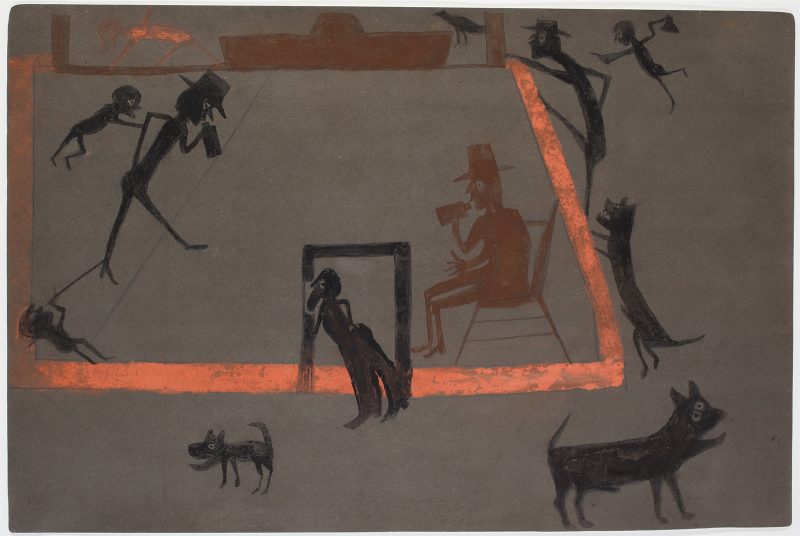
Artists outside the mainstream influence those in the mainstream
The exhibition explores the influence of art produced by artists without formal art education and working beyond the confines of the self-consciously avant garde art world – Cooke calls them "Outliers" – on artists who are part of that mainstream art globe. The exhibition'southward labels do not at all make clear which artists are which, nor does the exhibition meaningfully reveal what it is that the mainstream artists took from their untrained colleagues. Because of this it is curious but unknowable why Yasuo Kuniyoshi and Mary Heilman are shown rather than Alexander Calder and Jim Shaw, for example.
Outsiders or Outliers are non new subjects to the fine art earth, and this exhibit shows the influence of marketplace and money on what appears in museums
The subject is hardly new. Artwork by Cooke's Outliers – the more usual term has been "Outsiders," but terminology, and indeed criteria for the category accept always been open up to question — has been subject to a large amount of exhibition and academic report over several decades and across several disciplines, and is fraught with political and ethical challenges. What the exhibition does reveal is changing curatorial gustatory modality, and the influence of big money on what is seen in art museums today.
History of artists' fascination with work by the self-taught
The interest of mainstream artists in work by their more than isolated contemporaries began in the Nineteenth Century under the influence of Romanticism. Artists who rejected the limitations of an ossified academic tradition turned elsewhere, finding inspiration in work that was unconstrained by the artistic and social expectations of their ain millieu. When Picasso said "I never drew like a kid," it was certainly rueful – an acknowledgment that even his beginning scribbles were made with an awareness of academic conventions and standards. In a movement described under the broader term "Primitivism," artists turned to the work of children, tribal peoples, social isolates, mental patients and rural peasantry. The interest in this final – folk art – was associated with various nineteenth-century nationalist movements and the origin myths of several new European states, expressed in literature and music as well as the visual arts.
A notable involvement by artists in some of this textile was sparked past the publication in 1922 by the medico and art historian, Hans Prinzhorn of a collection of work past mental patients in Heidelburg. Information technology was known to exist of interest to Ludwig Kirchner, Emil Nolde, Paul Klee, Max Ernst, the French Surrealists, Richard Lindner, and particularly Jean Dubufett. Dubufett in turn assembled his ain collection of art by mental patients and other isolated artists, creating the museum Le Compagnie de l'art brut ( Dubuffet's term for Outsider art) in Lausanne. This piece of work past Outsiders influenced his own art and he promoted it in the U.S.,where he had a notable impact on artists in Chicago.

Integration of Outsider art in museums
The extent to which piece of work by Outsiders has been integrated with that of their trained contemporaries or been isolated in split museum departments or even in specialized museums has varied with fourth dimension and past establishment. Paintings by the customs officer turned amateur painter, Henri Rousseau, take entered the history of modern fine art seamlessly past now. Anyone who regularly visited the Museum of Modern Art, New York in the 60s-70s would know the piece of work of John Kane and Morris Hirshfield, which hung beside work by canonical European modernists, with zilch to bespeak that they might be considered in a split category. That has non been the case during the by several decades when they have remained in the storerooms.
Exoticizing the lives of the artists over the piece of work itself
Underlying the collection and exhibition of the work of Outsiders is the fact that it is made by impoverished, often politically marginalized artists or by those isolated because of mental illness, and only enters museums such as the National Gallery of Art after it has been discovered by artists, accepted by mainstream galleries and sold to the wealthy. This creates an disproportion of money, power and agency that it is hard to ignore – and at times has reflected a romantic attitude to these artists' deprivations. Some outsider artists created work entirely for themselves – which is not to say that they were cutting off from influence of other fine art and imagery they gleaned from books, magazines and popular civilisation. Other artists created and showed their piece of work within their own, rural communities; in many cases it was an expression of evangelical Christianity – something that most fine art museums have non tried to address in any serious mode. A few of the artists were happy to exist represented by mainstream fine art galleries equally long ago as the 1930s. Merely the majority of outsider artists – the quilters of Gees Curve being notable exceptions – have entered museums without their participation and/or posthumously, with no say over how their piece of work is presented.
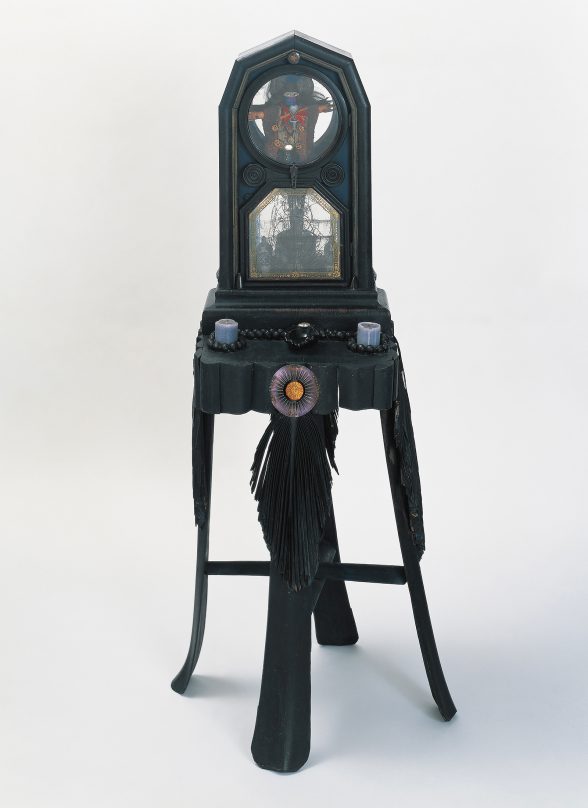
This lack of participation by outsider artists in museum exhibitions of their work is in stark contrast to the participation of their trained contemporaries, whose exhibitions are sometimes installed past the artists themselves, and usually accompanied by catalogs that include interviews with the artists and essays discussing the artist'south mode, development, subject affair, influences and, if not standard, the artist'southward choices of how and where to present the piece of work. That said, in the past decade monographic exhibitions of the work of Martin Ramirez, James Castle, Judith Scott and Horace Pippin have been exceptional in foregrounding their fine art over the artists' biographies, a true change for the better.
A walking guide on what to see in the huge exhibition
If you want some management through the exhibition, I'd recommend the following, not because they are the almost important, but because the artists are the least published and/or the work is difficult to come across considering information technology is in private or obscure collections or needs to be stored away from calorie-free. (Annotation: I'm making no stardom as to the artists' backgrounds:)
- In the entrance room encounter Judith Scott's powerful, wrapped bundles;
- Room two has Patrick J. Sullivan's dreamlike "The Fourth Dimension" and Seraphine Louis' "Feuilles," an affluence of flowers that expand into atmospheric, layered color;
- The entirety of Room iii is stunning, and a concentrated viewing feel could stop here; information technology includes a peculiarly sophisticated Jacob Lawrence that uses a naive language to create a formally and intellectually complex painting, as well equally wonderful work by William Edmondson, John Flannagan, Janet Sobel, Bill Traylor, Morris Hirshfield and Horrace Pippin.
- Room four is a rare risk to encounter the Chicago Imagists outside of Chicago;
- In Room 5 Steve Ashby tells adult stories with disarming, child-similar simplicity;
- Room 6 displays John Outterbridge and Noah Purifoy's haunting assemblages in interesting juxtaposition to the ameliorate-known Bay Area Funk artists.
- In Room 7 finish — have a seat and sentinel the slide prove of artists who created unabridged worlds, non just objects.
- Room 9 contains Forrest Bess's personal iconography of sex and alchemy;
- Room 11 includes Zoe Leonard'southward fictional annal, which begs for credence, and the work of Lee Godie who established her ain celebrity from the basis upwards, through performance and documentation;
- In Room 12 are Alan Shields and Howardina Pindell, artists who have not received their due; And in the final area, Greer Lankton's spooky dolls for grown ups are displayed along with her diaristic writings.
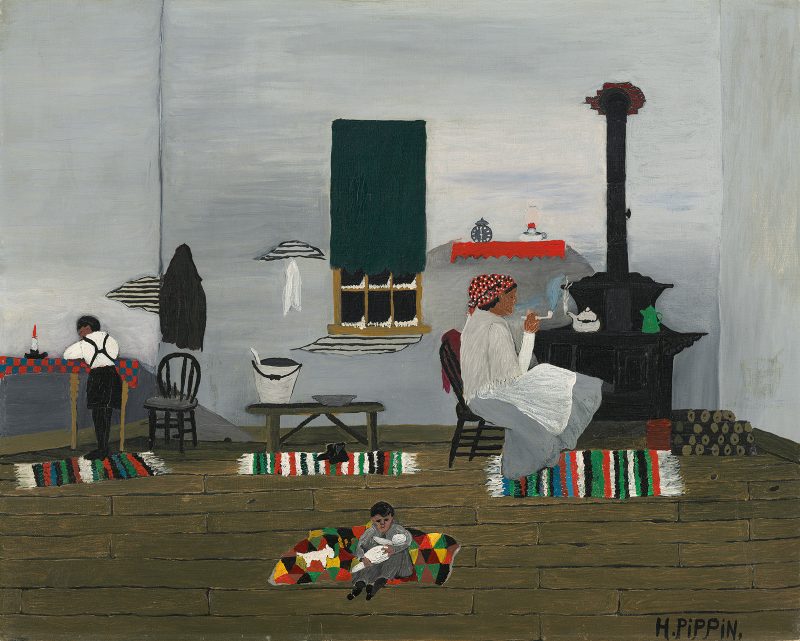
Parting Thought about a show this size
An exhibition this size only encourages paying express attention to each work — which I don't retrieve should be the chore of museums. Information technology likewise undermines any point the curator might exist trying to make. Given this glut, the best communication I accept for visitors is become – and enjoy it. Expect at what catches your eye, particularly the unfamiliar. Don't endeavour to see everything or worry most what you lot miss. Time spent with any of the material is certain to be a rewarding experience.
"Outliers and American Vanguard," National Gallery of Art, Washington DC to May 13, 2018. The evidence travels to the High Museum of Art, Atlanta, June 24–September xxx, 2018 and Los Angeles County Museum of Art, Nov 18, 2018–March xviii, 2019.
Source: https://www.theartblog.org/2018/02/national-gallerys-outliers-and-american-vanguard-art-blockbuster-show-with-many-gems-but-too-much-work/
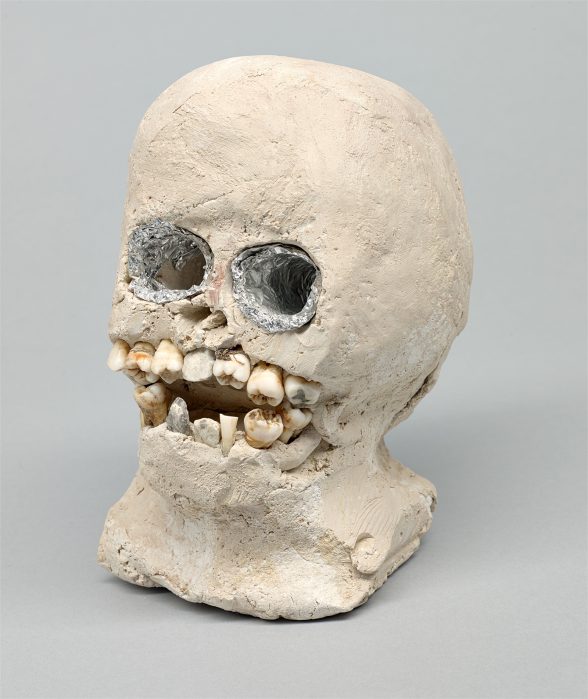
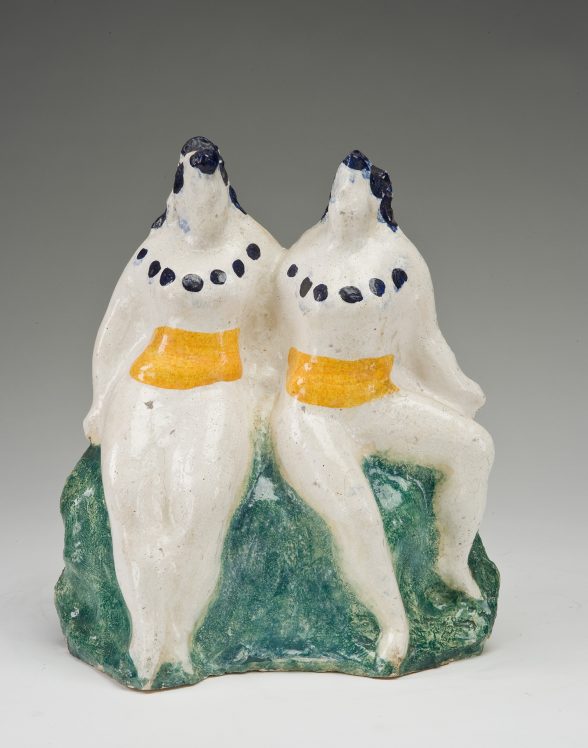
0 Response to "Outliers and American Vanguard Art From the East Building Concourse Gallerie"
Postar um comentário